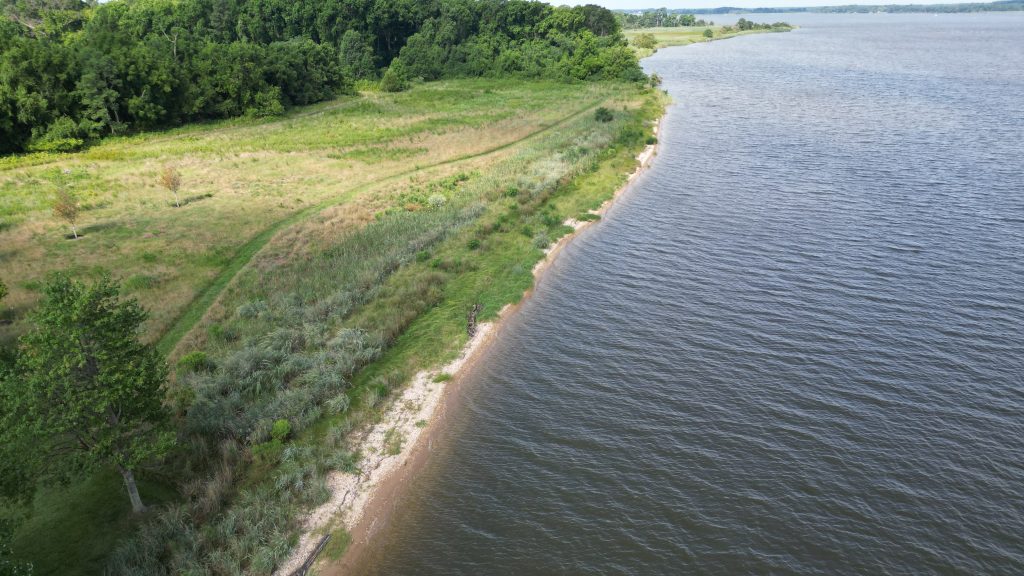The Maryland Department of Natural Resources (DNR) is awarding $29 million from the Chesapeake and Atlantic Coastal Bays Trust Fund to 27 ecological restoration projects encompassing 160 sites throughout the state for Fiscal Year 2026. These projects were selected based on their ability to improve water quality and provide other benefits such as resilience to climate impacts, habitat enhancement, and environmental justice considerations.
These projects deploy best management practices including streamside tree buffer plantings, reforestation, stream restoration, stormwater management, living shorelines, agricultural practices, and wetland creation.
Administrators of the Chesapeake and Atlantic Coastal Bays Trust Fund use the latest science and data to determine the most cost-efficient and effective non-point source pollution reduction projects. DNR selected the recipients from applications for outcome-based funding through the department’s online Grants Gateway.
“Restoring the Chesapeake Bay watershed requires partnerships and the Chesapeake and Atlantic Coastal Bays Trust Fund is one of our best tools to help local communities develop effective solutions to improve water quality, habitat, and access to nature,” said Maryland Secretary of Natural Resources Josh Kurtz. “These grants will help limit harmful pollutants from entering our waterways while improving the economic viability of Maryland’s waterfront and maritime communities.”
The projects awarded this funding round will benefit local waterways and the Chesapeake Bay by removing an estimated 89,955 pounds of nitrogen, 9,449 pounds of phosphorus, and 11,198 tons of sediment. In the water, these nutrient pollutants fuel algal blooms that discolor the water and remove dissolved oxygen that’s necessary for species such as fish and crabs to live.
Project highlights for FY2026 include:
The Oyster Recovery Partnership (ORP) will restore 20 acres of oyster reef within the Wye River Oyster Sanctuary in Queen Anne’s County. In collaboration with both state and local authorities, ORP will establish a methodology that allows local jurisdictions to leverage the nitrogen and phosphorus reductions achieved by this project for pollution reduction credits.
Friends of Jug Bay Wetlands Sanctuary will undertake a stream restoration project to improve the ecological health of 7,100 linear feet of stream on Jug Bay Wetland Sanctuary property. The goal is to prevent nutrients and sediment from entering the Patuxent River each year and enhance the sanctuary’s resilience to climate change.
Washington College will collaborate across six Maryland counties (Caroline, Cecil, Dorchester, Kent, Queen Anne’s, and Talbot) to restore 230 acres of native grasslands, pollinator habitats, and buffers. Additionally, the college will focus on restoring 10 acres of wetlands and planting 8.5 acres of trees in priority areas.
Prince George’s County will use the funding to establish a “green corridor” in Mount Rainier, utilizing medians and a submerged gravel wetland to enhance the area’s environmental health and filter runoff coming from the roadway to remove pollutants before the water enters the Northwest Branch of the Anacostia.
The Resilience Authority of Charles County will retrofit land near a recreation center in Waldorf to address the climate impacts of increasing precipitation and temperatures by removing and replacing unnecessary impervious surface to create a “Stormwater Pocket Park.”
Dollar amounts for each project will be available later this year when the contract process is completed. DNR Watershed and Climate Services staff will continue to provide technical assistance to these designated recipients as the projects are finalized.
The complete list and location of funded projects can be found on the DNR webpage for the FY26 Chesapeake and Atlantic Coastal Bays Trust Fund.

